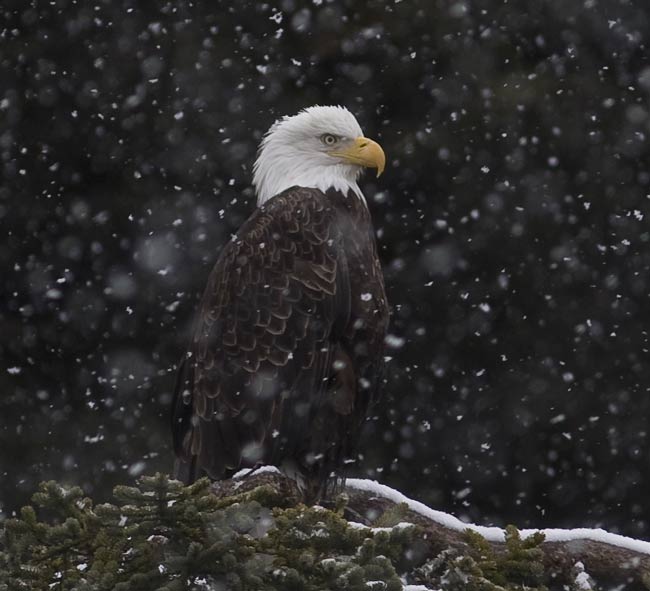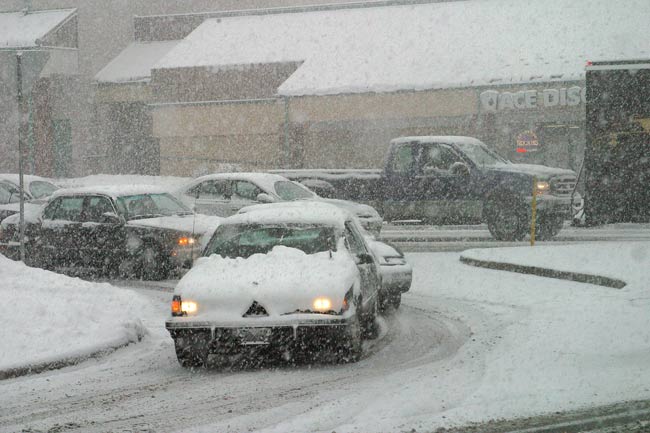What Are the Chances of a White Christmas Everywhere?

From holiday films to children's books, Christmas seems to be perennially tied with snow. But dare we dream of such a winter wonderland across the globe? The prospects are enticing and may reside in more than fairy tales, scientists say.
They can certainly keep dreaming, because climatologists say that it's not impossible. But don't bet all the holiday gifts under the tree on the chance of a snow-blanketed Earth this Saturday.
"Is it possible that snowfall can occur across the entire Earth? If the temperatures are low enough and if there is an excess of humidity present, then it can," said Caspar Ammann, a scientist at the National Center for Atmospheric Research (NCAR) in Boulder, Colo. "Is it likely? No."
Every part of the globe may have at least seen snow on the ground at some point during Earth's existence, Amman explained, but not during human history. [How Weather Changed History]
The last time the entire Earth may have seen real "ice-house conditions" was about 600 million or 700 million years ago, during the event known as "Snowball Earth." Humans can count themselves lucky to have not experienced that winter wonderland, which more likely resembled the ice-locked museum of horrors described in Kurt Vonnegut's classic book "Cat's Cradle."
A volcanic super eruption might do the trick nowadays by blocking most sunlight with ash in the atmosphere and cooling down the Earth, according to some simulations. But Amman added that the tropical oceans hold enough heat to buffer against a few years of limited sunlight.
Let it snow, let it snow
Sign up for the Live Science daily newsletter now
Get the world’s most fascinating discoveries delivered straight to your inbox.
Statistics need not stomp on all the holiday cheer. Author Connie Willis playfully imagined a worldwide white Christmas for her 2003 short story "Just Like the Ones We Used to Know," which appeared in Isaac Asimov's online magazine.
Climatologists point out that snow can appear in odd places at unusual times of the year.
"There's been snow recorded in the Sahara, there have been some flurries," said David Robinson, a climatologist at Rutgers University in New Jersey. "It has snowed on every continent."
Both Jerusalem and Bethlehem in the Holy Land have experienced snow, Robinson pointed out. The highlands of South Africa have seen white stuff, as have the aptly named Snowy Mountains of Australia and the Andes mountains of South America. Even Shanghai, China does not entirely escape Jack Frost's cold fingers each year, despite being relatively far south.

In fact, most countries around the world can claim to have had snow on the ground, aside from certain regions of Southeast Asia and some islands in the South Pacific.
"Most countries have seen snowfall, but not necessarily enough to make a snowman," Robinson told LiveScience. "We're talking more or less [recent] decades, with maybe anecdotal information beyond that."
Those recent decades of snowfall data go back to the launch of weather satellites in the 1960s. Before then, ground stations provided additional records.
Just like the ones we used to know
There may be a slightly better chance of the entire United States having snow on the ground for Christmas. Just last February, news headlines spoke of snow cover in 49 out of 50 states – even if the snow didn't technically cover everything, Robinson pointed out.
And it turned out that even Hawaii apparently had a patch of snow on Mauna Kea. A photo of that spectacle was submitted to a website set up by Patrick Marsh, a University of Oklahoma student who had set out to capture photos of snow on the ground in all 50 states.
Anyone who wants to play the odds for a white Christmas might consider a report by the National Oceanic and Atmospheric Administration (NOAA). It includes data from 1961 through 1990 and defines a white Christmas as having at least 1 inch (3 centimeters) of snow.
Going by the data, the northern Rockies, Great Plains, Great Lakes area and most of New England have the best shot with a more than 60-percent chance. By contrast, the odds are less than 20 percent for most of the southern third of the United States (not including the Rockies) and along the Pacific coast to receive snow this Christmas.
Some places can count on a practically 100-percent chance of a white Christmas, based on data from the past decades, including much of Alaska, along with cities in Michigan and Minnesota, and Stampede Pass, Wash.
In the Northeast, the town of Pinkham Notch, N.H., grabbed the top spot with a 95-percent chance of snow this Dec. 25. That beat out North Pole, N.Y., in the Adirondack Mountains, with its mere 72-percent probability of a white Christmas, according to the Northeast Regional Climate Center at Cornell University.

Making a Christmas miracle
Of course, the long-term climate records based on past history won't predict any last-minute jumps or quirks in weather patterns. But the climatologists still have a good sense of why it might take a minor miracle to create a white Christmas all across the United States.
"Oftentimes in the U.S., you have a big enough continent that if you have the jet stream going to the north and the west it dips in the east," Robinson said. "It's difficult to blanket the entire [North American] continent in cold air."
Similarly, Ammann suggested that a white Christmas across the U.S. was "possible, but extremely unlikely" given the conditions that would have to be in place for snowflakes to start appearing all across the country – and that doesn't factor in Hawaii.
"Yes, a cold air outbreak could hit Florida, but it's very unlikely that at the same time southern California gets hit," Ammann said. "And it would have to be at the same time because the snow melts at these latitudes very rapidly."
"But as with everything in science, it's not completely impossible," Amman concluded.
- 101 Amazing Earth Facts
- North vs. South Poles: 10 Wild Differences
- The Coldest Places on Earth
You can follow LiveScience writer Jeremy Hsu on Twitter @ScienceHsu.










